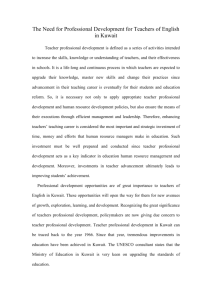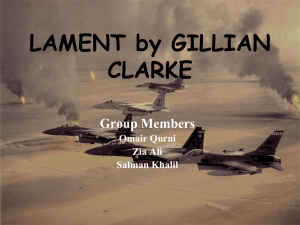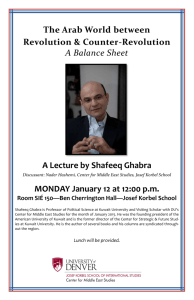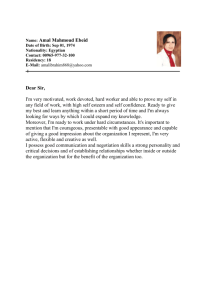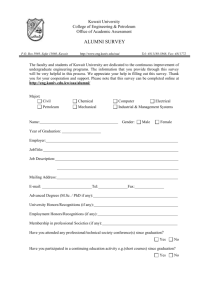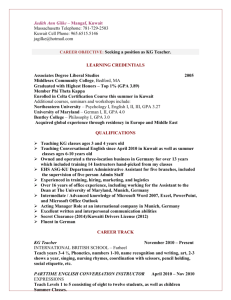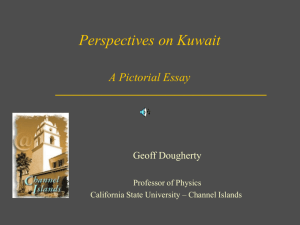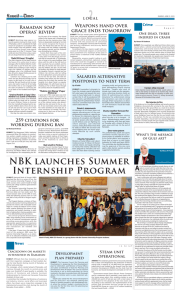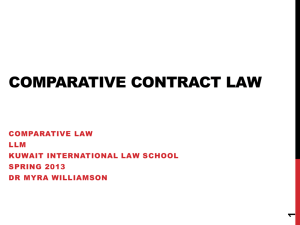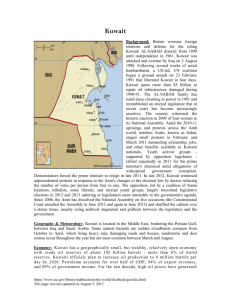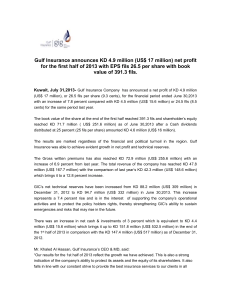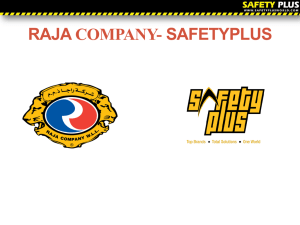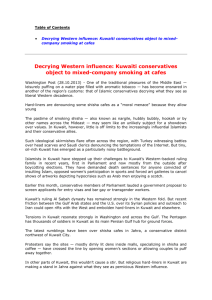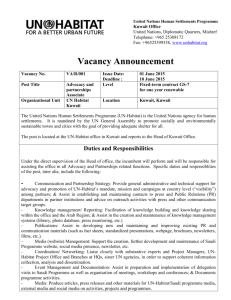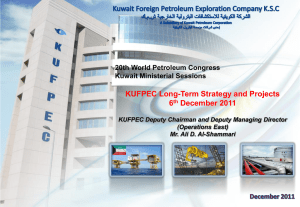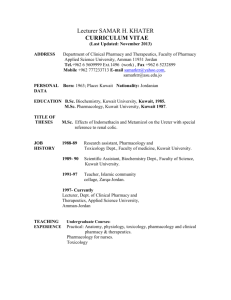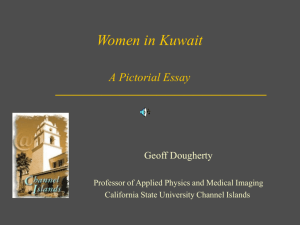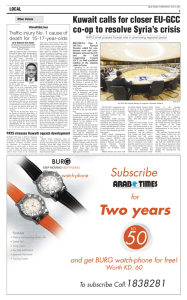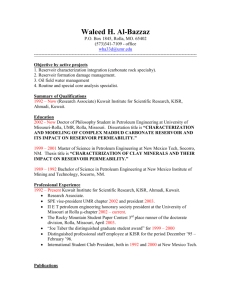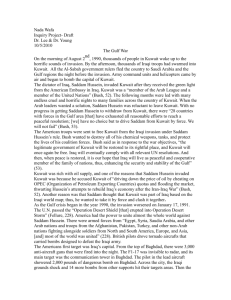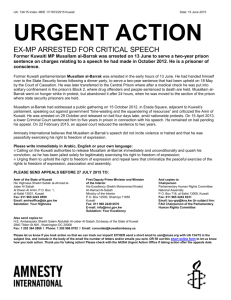Docx Version - Pegasus Conference
advertisement
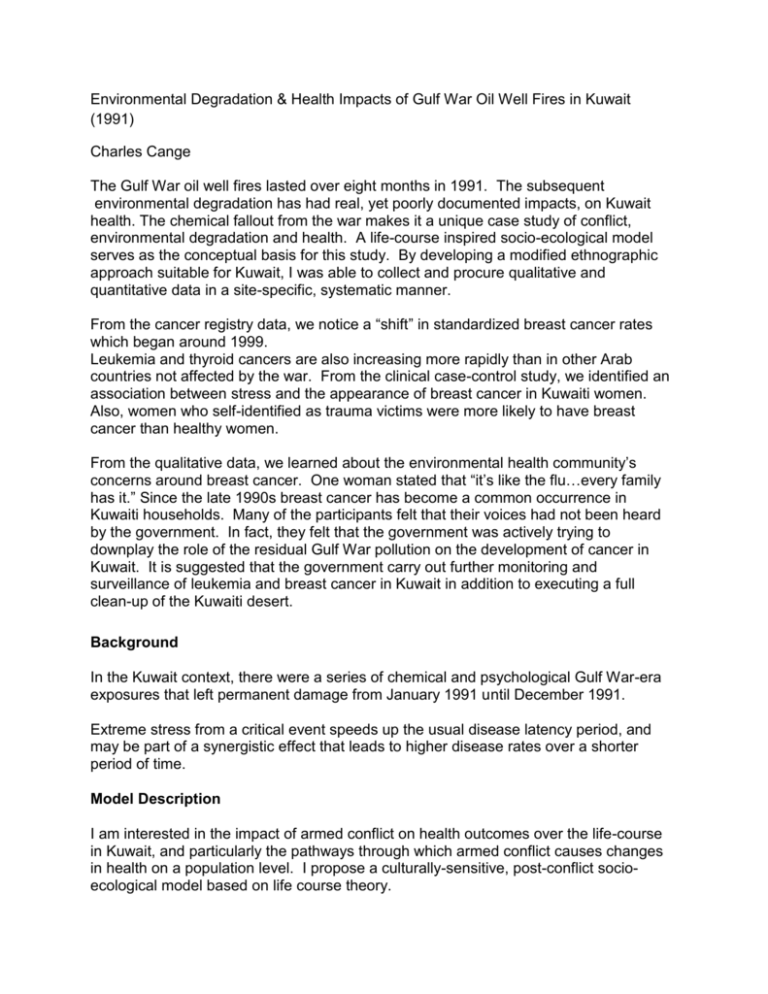
Environmental Degradation & Health Impacts of Gulf War Oil Well Fires in Kuwait (1991) Charles Cange The Gulf War oil well fires lasted over eight months in 1991. The subsequent environmental degradation has had real, yet poorly documented impacts, on Kuwait health. The chemical fallout from the war makes it a unique case study of conflict, environmental degradation and health. A life-course inspired socio-ecological model serves as the conceptual basis for this study. By developing a modified ethnographic approach suitable for Kuwait, I was able to collect and procure qualitative and quantitative data in a site-specific, systematic manner. From the cancer registry data, we notice a “shift” in standardized breast cancer rates which began around 1999. Leukemia and thyroid cancers are also increasing more rapidly than in other Arab countries not affected by the war. From the clinical case-control study, we identified an association between stress and the appearance of breast cancer in Kuwaiti women. Also, women who self-identified as trauma victims were more likely to have breast cancer than healthy women. From the qualitative data, we learned about the environmental health community’s concerns around breast cancer. One woman stated that “it’s like the flu…every family has it.” Since the late 1990s breast cancer has become a common occurrence in Kuwaiti households. Many of the participants felt that their voices had not been heard by the government. In fact, they felt that the government was actively trying to downplay the role of the residual Gulf War pollution on the development of cancer in Kuwait. It is suggested that the government carry out further monitoring and surveillance of leukemia and breast cancer in Kuwait in addition to executing a full clean-up of the Kuwaiti desert. Background In the Kuwait context, there were a series of chemical and psychological Gulf War-era exposures that left permanent damage from January 1991 until December 1991. Extreme stress from a critical event speeds up the usual disease latency period, and may be part of a synergistic effect that leads to higher disease rates over a shorter period of time. Model Description I am interested in the impact of armed conflict on health outcomes over the life-course in Kuwait, and particularly the pathways through which armed conflict causes changes in health on a population level. I propose a culturally-sensitive, post-conflict socioecological model based on life course theory. Novel Methods My methodological approach is distinct from previous post-conflict studies because it employs a novel, mixed-methods approach. Interview and survey data, demographic databases and epidemiologic data from the individual informant and the informant's context were collected. I am employing an analysis that combines statistical, descriptive, structured analyses of population, community and individual-level data. Conclusion The main advantage of a life-course approach is that it contextualizes the Gulf War as an environmental justice issue. This project seeks to inform the public of war-related cancer risks by focusing on breast cancer as one particular outcome in Kuwait. The model predicts an accelerated latency period that helps to inform health professionals when to expect cancer incidence to increase in Kuwait. With increased stress, trauma and numerous life changes in the post-conflict period, we hypothesize cancer rates will significantly rise in Kuwait, more so than if the war had not occurred.
